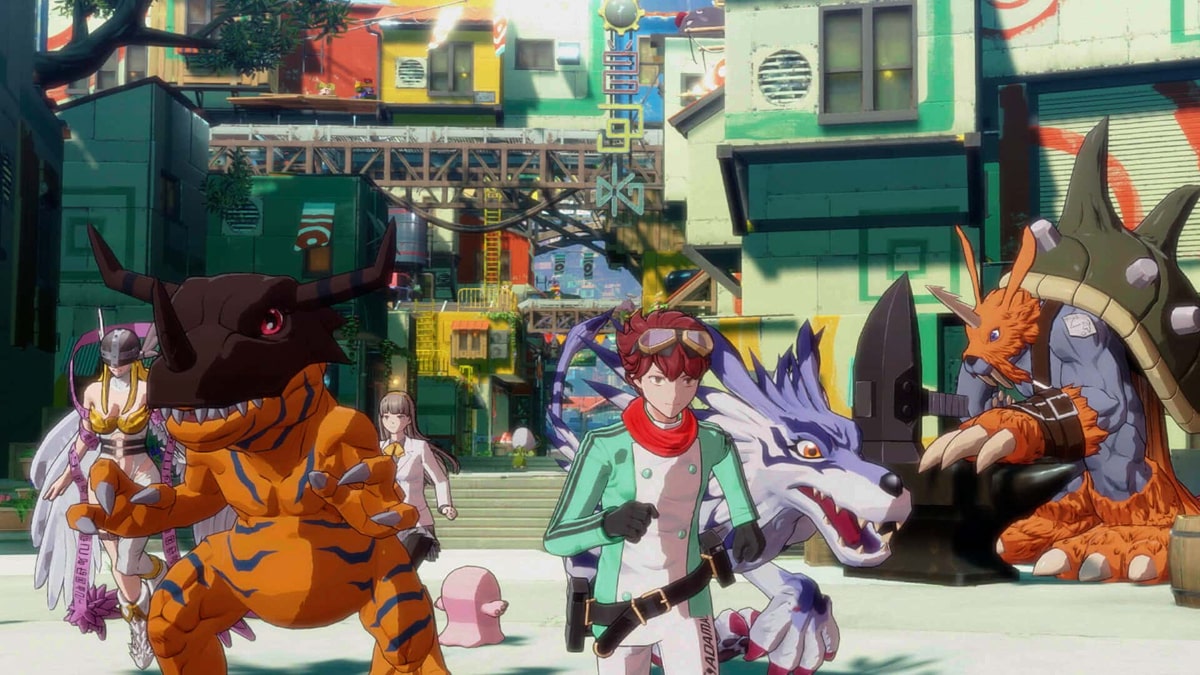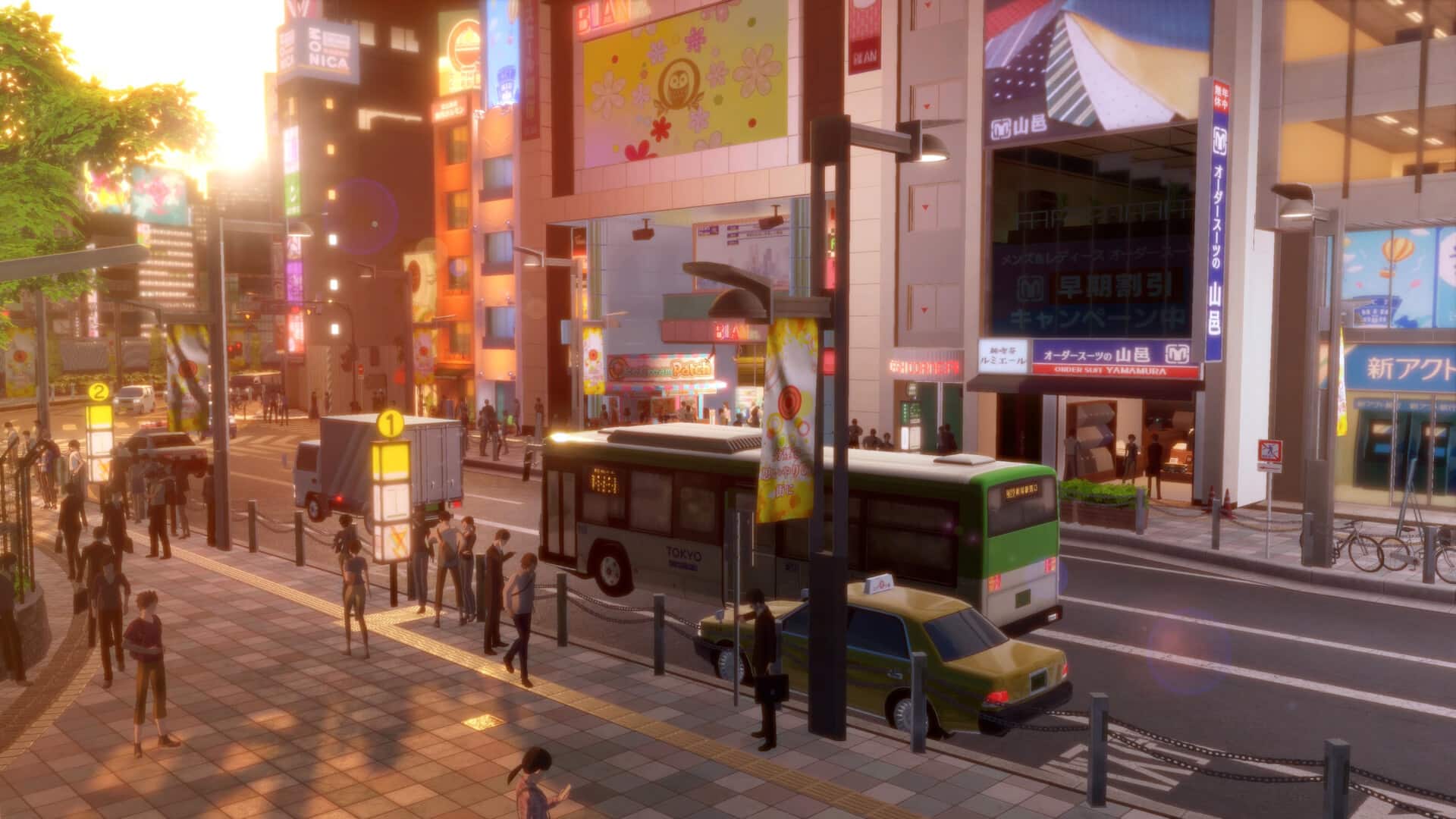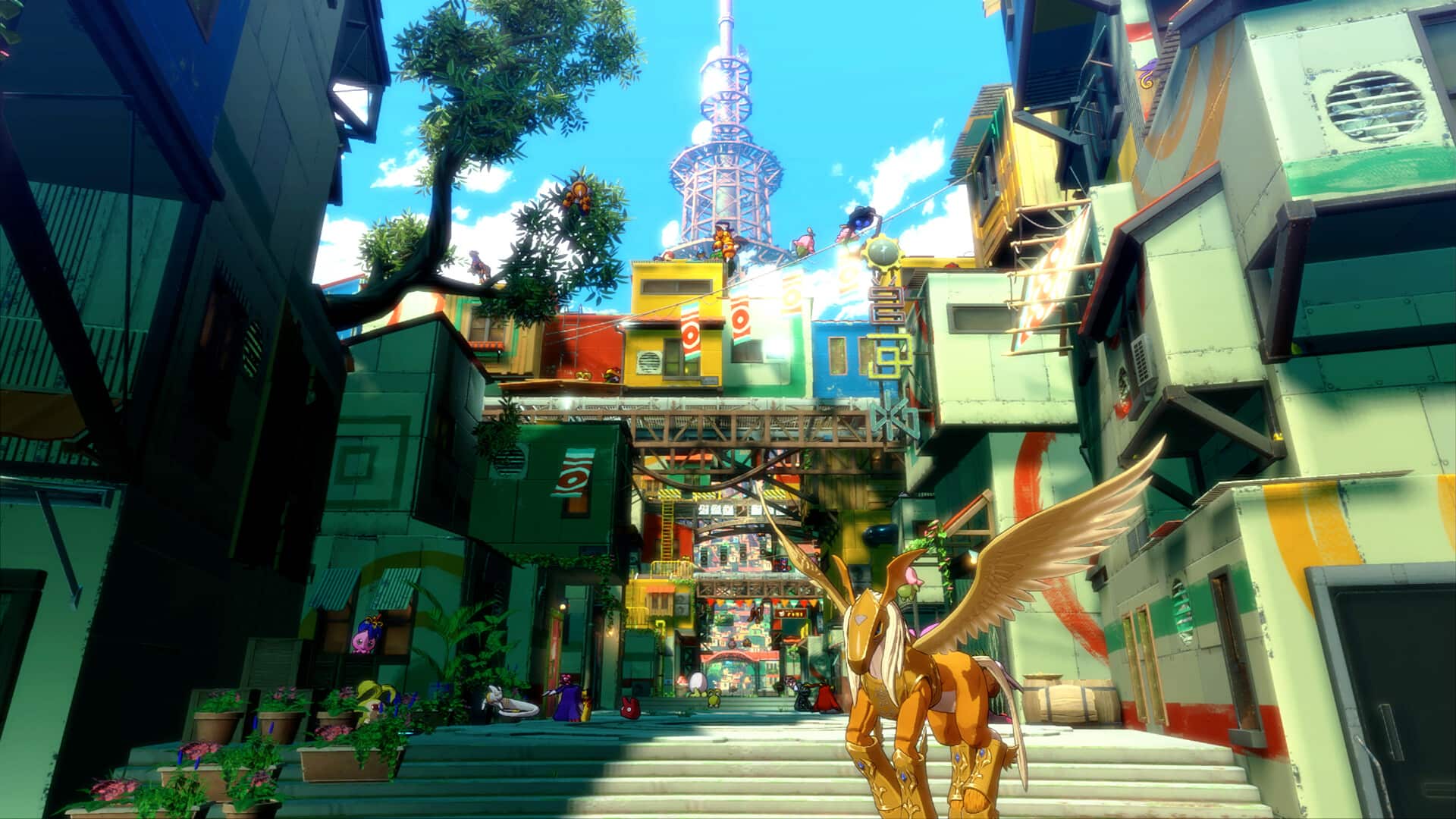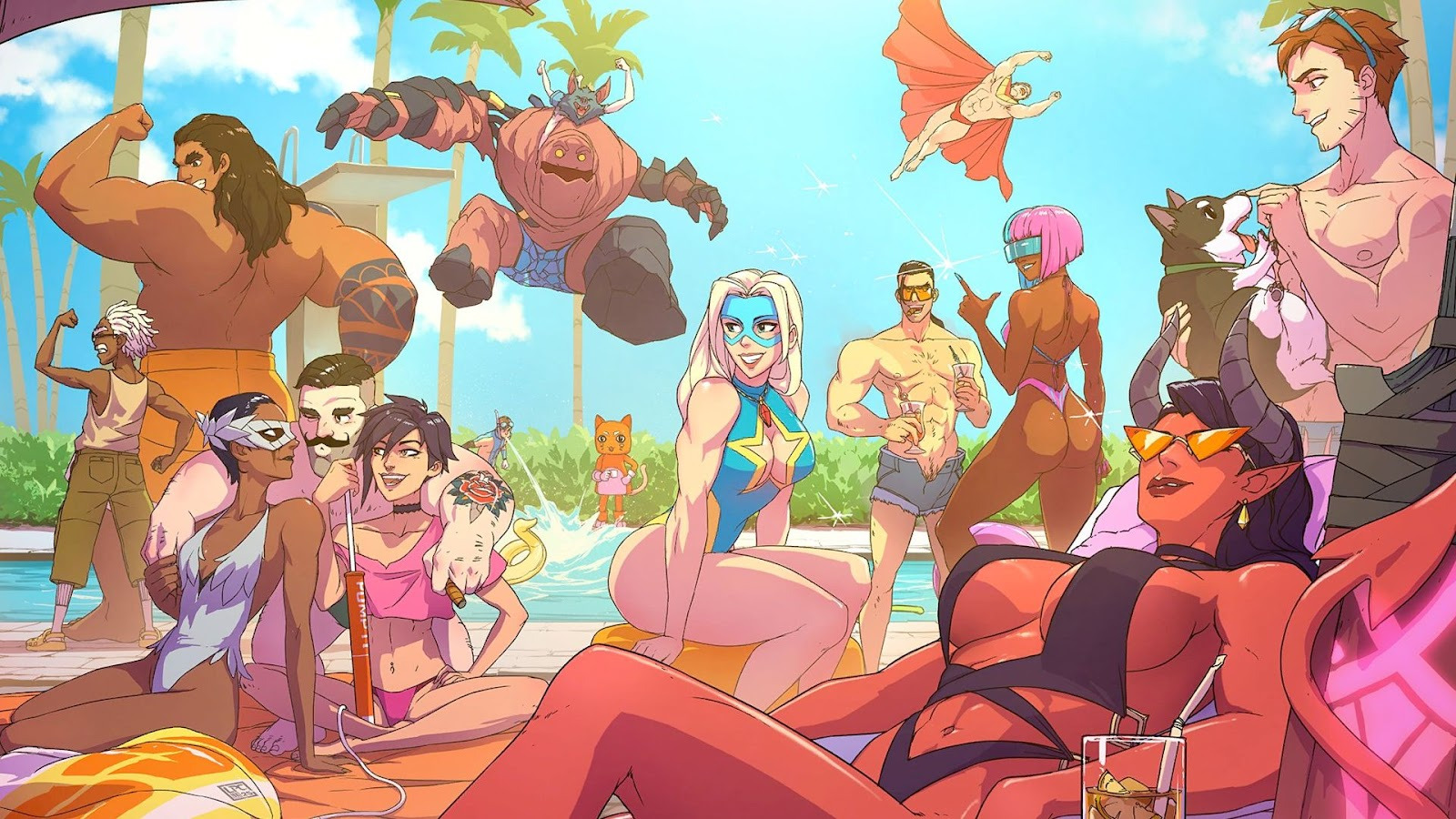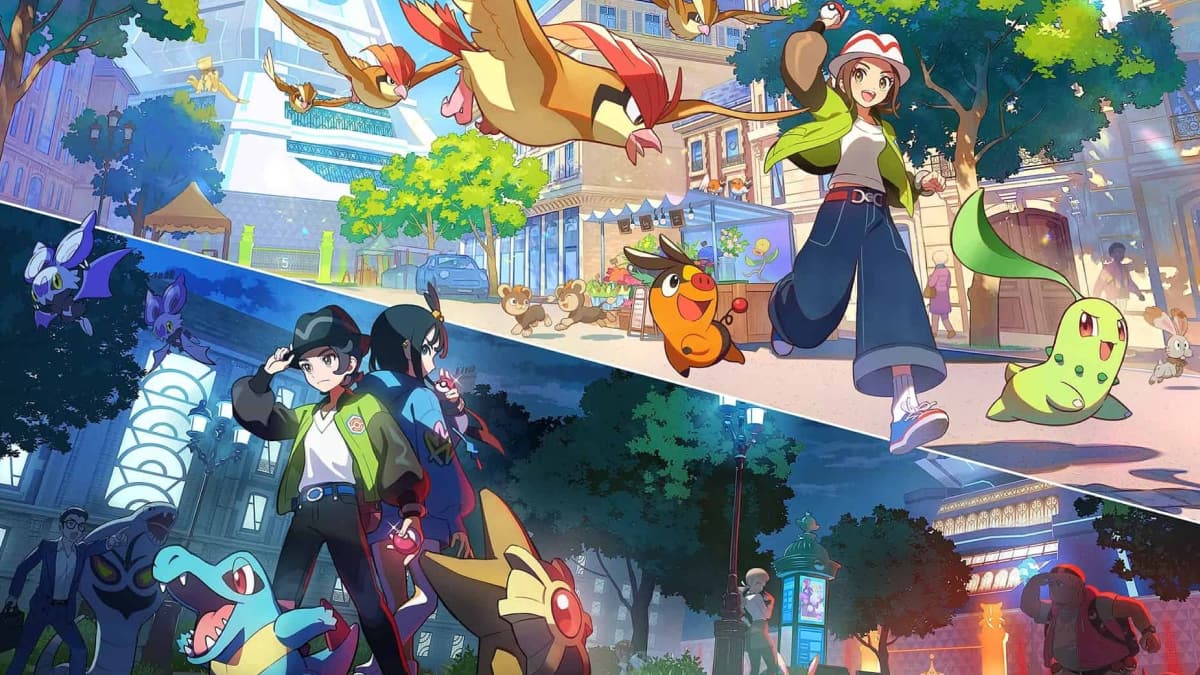You can trust VideoGamer. Our team of gaming experts spend hours testing and reviewing the latest games, to ensure you're reading the most comprehensive guide possible. Rest assured, all imagery and advice is unique and original. Check out how we test and review games here
To play Digimon Story Time Stranger is to be bombarded with vibrant color and sound. It is a kaleidoscope of surreal locales, bizarre creatures, and anime melodrama, all underpinned by an extremely robust monster-battling system that reaches the very height of JRPG greatness. While outsiders may find the endless parade of saccharine anime tropes baffling, those looking for an authentic Digimon experience in line with the earnest optimism of the beloved television show will find what they’re looking for here.
For the uninitiated, Digimon is a monster-battling franchise famous for placing groups of visually distinct teenagers in apocalyptic, reality-hopping scenarios where they and their monster buddies must save the world from some sort of supernatural terror or another. True to form, the stakes in Digimon Story Time Stranger are astronomical, if poorly conveyed in the opening act. However, if you soldier through the parade cutscenes (and their somewhat janky translations), you will be rewarded with a deeply generous monster rearing and battle system. Beware, for this will sink its teeth into you with all the zeal of a particularly emaciated bloodhound.
A tale of two cities
Digimon Story Time Stranger is a game about contrasts. The central story follows a generic protagonist who is a member of a clandestine organization charged with investigating supernatural anomalies. The first setpiece drops you in urban Tokyo, where you’re forced to confront the consequences of incursions undertaken by creatures from a digital world called Iliad. For the most part, dealing with these incursions has the air of cryptid hunting, complete with a high-energy influencer buddy keen to turn footage of Digimon into extra clicks for her social media channel.
Soon enough, you’ll find yourself in Iliad itself, and the formula will be inverted. Now, you’re the cryptid, winning the trust of this digital world’s denizens by helping them fight in a sort of Digimon civil war against a nefarious faction known as the Titans. The clean, urban lines of Shinjuku City give way to a ramshackle Digimon megacity built on a massive radio tower where you make your home away from home. This palpable visual contrast adds to the sense of fantasy and whimsy at the core of Digimon Story Time Stranger.
Despite its modest production value, Digimon Story Time Stranger’s environmental design is a masterclass in showing, not telling. The digital world itself is full of immense, larger-than-life environments, impressive in their fantastical immensity. Areas between the two worlds are often bizarre geometrical impossibilities with enough visual oddities to make H.P. Lovecraft blush.
However, this level of aesthetic competence is not necessarily reflected in the central storyline. True to the theatrical nature of JRPGs, Digimon Story Time Stranger is full of cutscenes, many of which, while delightfully earnest and whimsical, suffer from ropey translations from the original Japanese, which gives the dialogue an oversimplistic, excessively expository tone. However, those who enjoy the disjointed idiosyncrasies of dubbed anime will likely find this comfortable rather than jarring.
The story follows Aegiomon, a humanoid Digimon who emerges in the real world and soon discovers they have a grand destiny to fulfill. You, alongside an emotionally burdened young woman, her distant, grief-ridden father, and her influencer best friend, must help Aegiomon protect his home before a foretold apocalyptic calamity arrives and destroys the earth. This narrative is expressed through simplistic, heavy-handed, if refreshingly earnest, dialogue. Even I, a longtime Digimon fan, found it difficult to digest at times.
Digimon are the champions
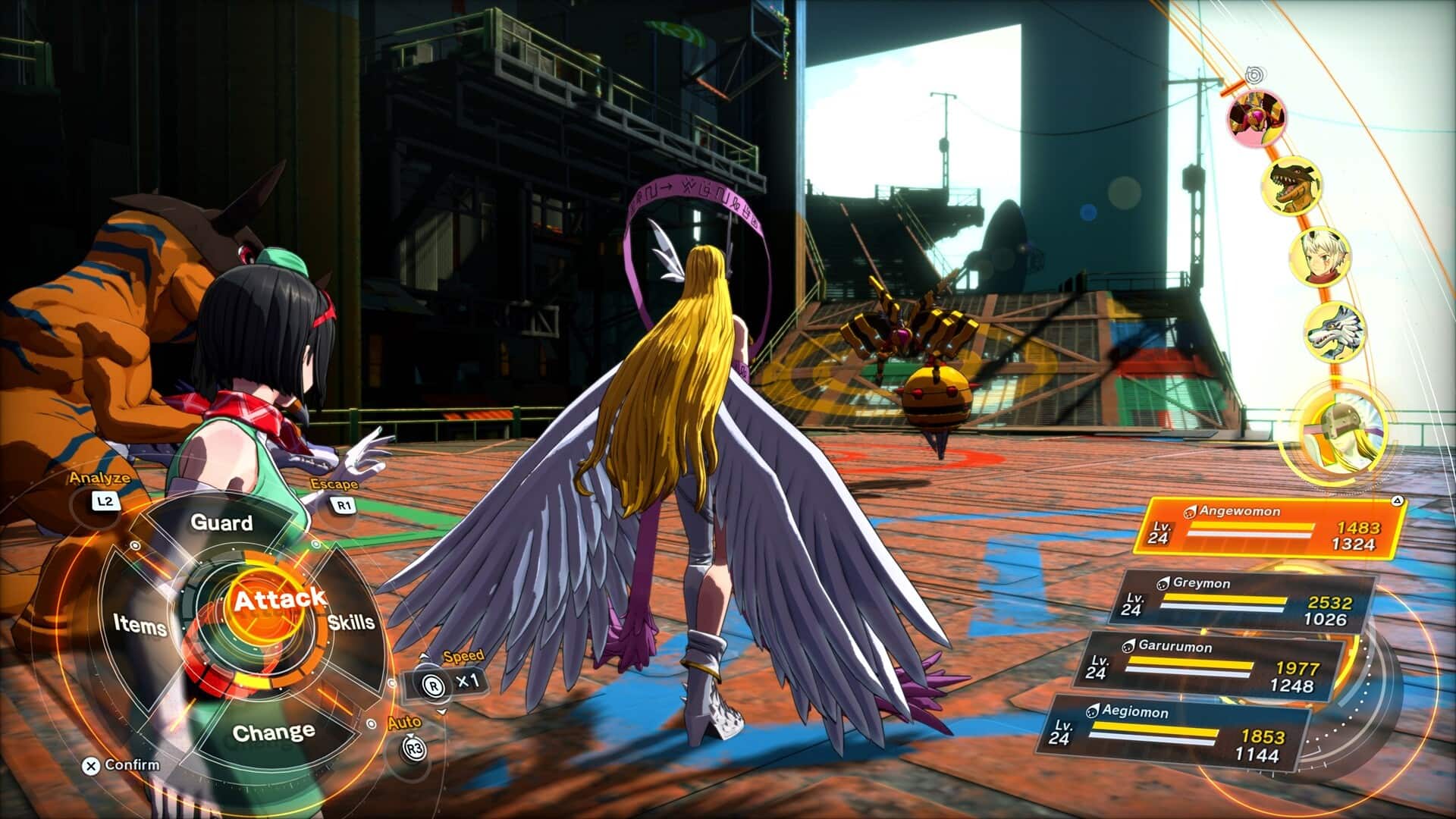
The mechanics that underpin Digimon Story Time Stranger are a consistent pleasure, rivalling and even exceeding many of the very best JRPGs on the market. In Digimon Story Time Stranger, you’ll build a highly bespoke team of Digimon. The systems that sustain this unfold like a fractal, with each decision point ushering in an unfolding tree of choices.
This is epitomised by the Digivolution system. Contrary to the likes of Pokémon, Digimon Story Time Stranger does not use linear monster evolution paths. Instead, Digimon evolve and devolve along branching trees, with each evolution having its own set of stat requirements, some of which are difficult to reach. These sometimes lofty requirements are attained by a secondary field of bonus stats, which increase whenever you Digivolve or de-Digivolve.
This means that, should you prove unable to reach the Digivolution criteria for a given higher-level monster, you can de-Digivolve and acquire additional stats. On top of this, Digimon stat growth is influenced by their personalities, which you can influence through charming (if repetitive) dialogue vignettes in the field, as well as specialised training regimens in the Digifarm (read: virtual space where you send your unused Digimon to frolic).
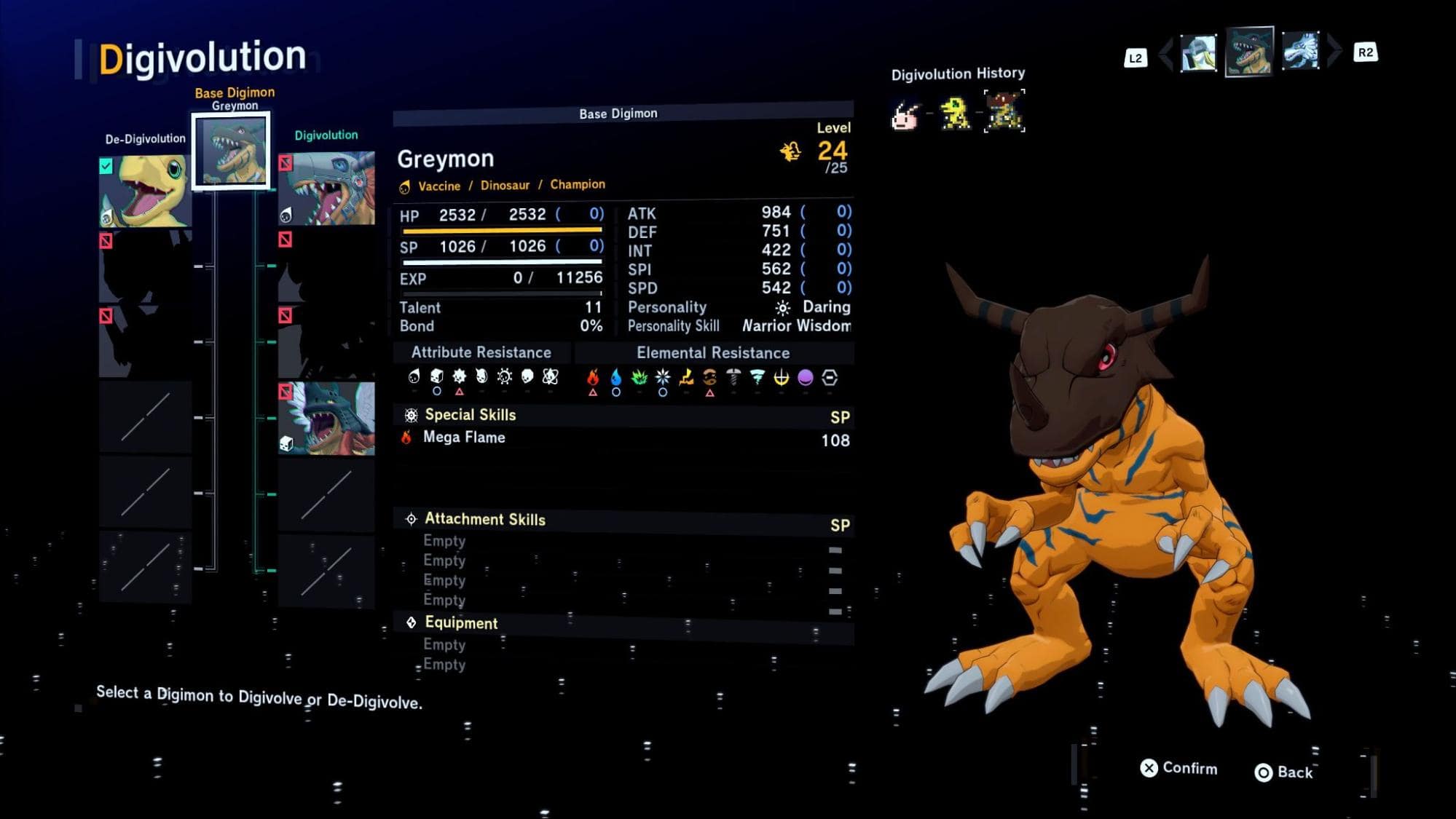
You’ll put your taming chops to the test in Digimon Story Time Stranger’s turn-based battles. Here, you’ll use a squad of three active Digimon (with three in reserve) to battle enemy Digimon on your quest. Battles are not random; rather, enemy digimon physically exist in the world. Strike them, and you’ll get to go first in the ensuing battle.
Each Digimon has a core type in addition to various elemental types. There are three core types: Virus, Vaccine, and Data, which behave in a traditional rock-paper-scissors format. This is complicated, however, by affinities, which follow the more traditional palette you might expect from the likes of Pokémon or Persona. These gameplay elements compound with delicious friction, allowing you to inflict triple damage if you play your cards right, or a measly one-quarter if you screw up.
Boss battles are especially meaty in Digimon Story Time Stranger. Even in the earlier acts, these setpieces are demanding (though the challenge can be circumvented by adjustable difficulty levels). Bosses will charge up special attacks, necessitating burst damage from your party lest they complete their wind-up and unleash a devastating salvo.
Between lightening-wreathed mega-parrots and master artificers piloting giant flying robot fists, there’s plenty of variance. And, while more run-of-the-mill battles are less exciting, battle speed can be increased at the touch of a button, making the game’s grindier sections relatively painless.
Lost in translation
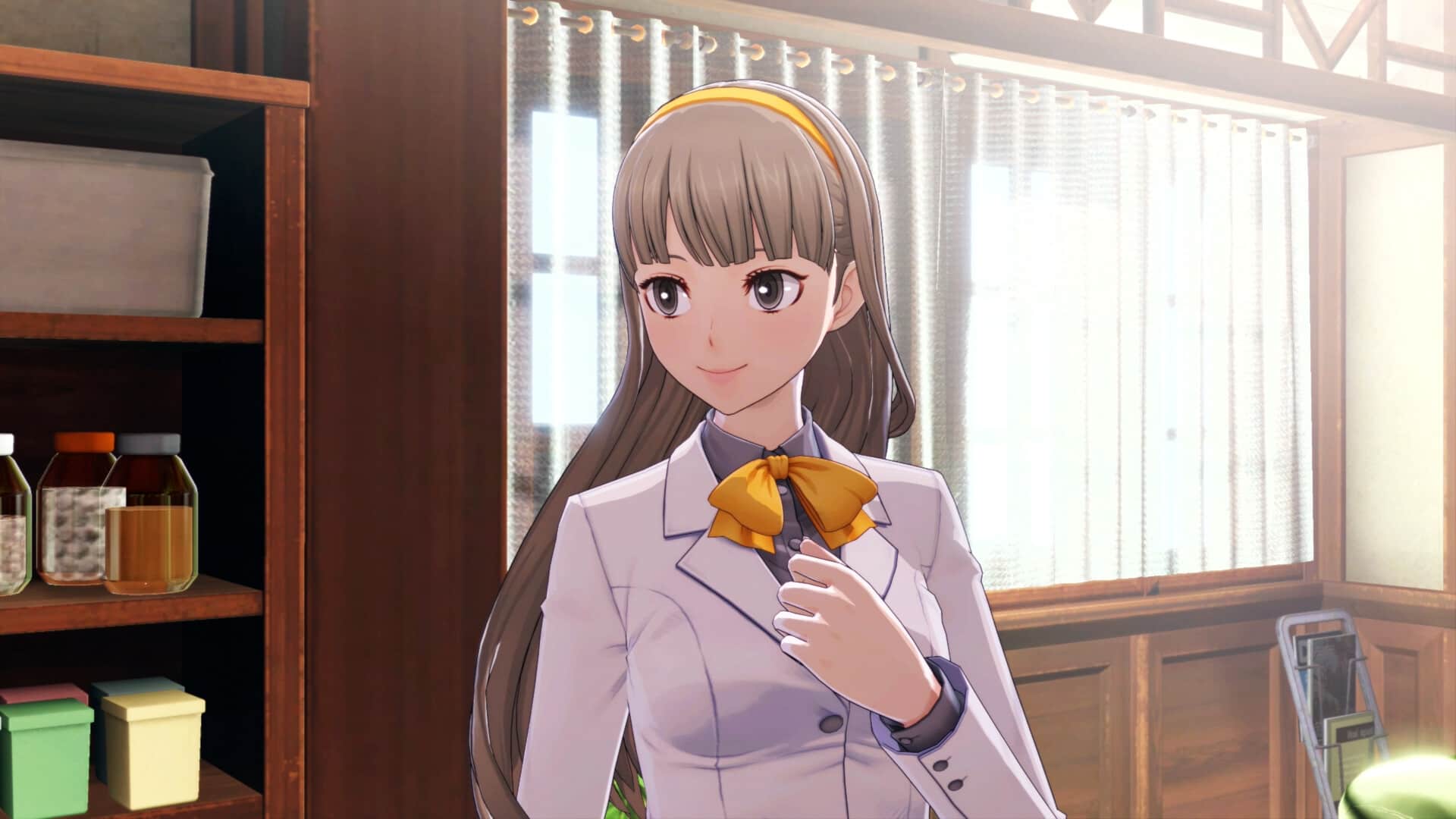
Despite the extremely rewarding systems that underpin Digimon Story Time Stranger, there is a sense of strain that underpins the experience as a whole; the title’s production value leaves a little to be desired. While the jankiness is never enough to unravel the playfulness at the game’s heart, it does often sit uneasily.
The cutscenes themselves draw from a relatively limited pool of animations, especially for human speakers. Human facial expressions in Digimon Story Time Stranger often veer into the uncanny and unsettling. Menus are occasionally laid out in counterintuitive ways, too, which, while never crippling, slightly steepens the learning curve. For instance, it is not immediately obvious how to remove a Digimon from the Digifarm and return it to your party. The answer is hidden in a button prompt in a seemingly unrelated menu.
That said, there is something inherently Digimon about this scrappy quality. These more flaky elements of the title feel right at home in a franchise perpetually concerned with plucky underdogs using the power of friendship and emotional healing to overcome adversity. While Digimon Time Stranger is not the most impressive JRPG on the market, it is perhaps the most Digimon game ever made. Like the protagonists of Digimon games and TV shows of yore, the title is unflinchingly true to its identity, and in that, it is an impressive success.
Reviewed on PS5. Code provided by the publisher.
